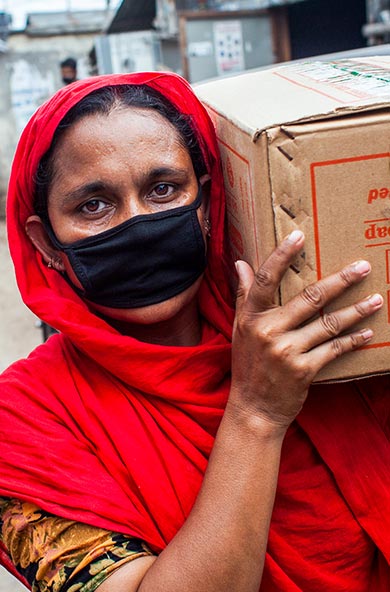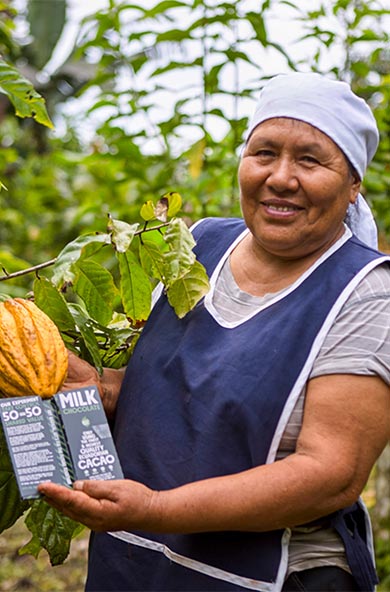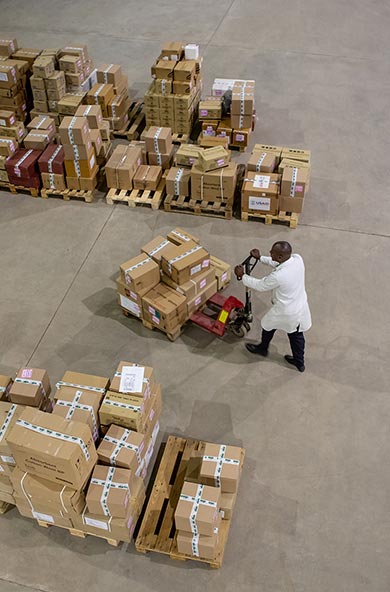At this week’s Paris Peace Forum, UNDP Administrator Achim Steiner put a clear proposition to governments and markets; “SDG alignment is indeed the first and necessary step to put finance to work for the prosperity, peace and wellbeing of people and planet, reduce global inequalities, and to secure the long-term value of assets otherwise challenged by recurrent systemic shocks linked to poor management of global public goods.”
Impact investing, stakeholder capitalism, Environmental, Social, and Corporate Governance (ESG) ratings are gaining traction beyond buzzwords. There is almost US$1 trillion in impact assets under management according to the Global Impact Investment Network. KPMG’s 2019 figures identified more than US$30 trillion in responsible investment. This was before COVID-19 and climate-related disasters that have increased the focus on social and environmental risk factors this year. Responding to the social and environmental effects of COVID-19, social bonds have entered the market in record volumes. Following on from their sibling green bonds, these are targeting debt markets for sovereigns and corporates seeking capital connected to sustainability targets.
How will we know whether this capital is indeed working for the ‘prosperity, peace and wellbeing of people and planet’? How can still more investors be encouraged to contribute positively to achieving the Sustainable Development Goals (SDGs)?
Our team at SDG Impact has taken on the task of helping investors, bond issuers, and enterprises understand how they can make significant and measurable contributions toward the Global Goals. Because, while interest in ESG investing continues to rise, the evidence on whether such investing is creating positive impact is not clear. We are confident that, given the right tools, the private sector will start to see its intentions translated to action.
So we are creating those tools. We have been working over the last 18 months to develop Standards to guide investment and enterprise practice; actionable guidance, to give context to data and metrics and enable better-informed decision making, grounded in leading-edge impact management practices.
UNDP entered this space as the integrator of the SDGs. We are competitively neutral but not agnostic about the positive effects we want to see for people and the planet. It is our role to mobilize governments and the private sector alike to take a more integrated approach to sustainable development and accelerate progress toward the SDGs. Before we developed SDG Impact Standards, there was no way to measure, authenticate and create integrity around claims that investments advance the SDGs.
Our SDG Impact Standards provide a blueprint for decision making and a guide for developing impact management systems. They are freely available and can be used as a diagnostic tool for organizations aligning their internal processes and practices to better address sustainable development risks and opportunities—and to facilitate and validate their SDG contributions.
As we have gone to market with consultation drafts, we have been delighted with the responses. The market overwhelmingly sees the important contribution these Standards can make in shifting capital to finance the SDGs. There has been strong consensus that an approach grounded in strategy, management, transparency and reinforced through strong governance can drive the standardization needed to achieve more positive contributions to the SDGs.
The SDG Impact Standards for Private Equity Funds are available on the market and are being piloted by a diverse, international cohort of investment firms. The SDG Impact Standards for Enterprises are open for a first round of consultation until 15 December and the SDG Impact Standards for SDG Bonds were released this week for a second round of consultation.
This is timely as the bond market is very active. Governments from the United Kingdom to Mexico, Bolivia to Bhutan are seeking debt to meet their climate adaptation, COVID-19 response and recovery and other SDG-related needs. Corporate and multi-lateral issuers have also been active in bond markets and are aligning their programmes with specific activities, projects, or programmes that contribute to the SDGs or lead to other sustainable development outcomes.
Our Standards are designed to enable bond issuers who seek to contribute positively to the SDGs to embed end to end systems to manage and communicate their impacts. The Standards can be applied across country and economic settings at all levels.
So, what comes next? We are developing an assurance model to accompany all Standards that will allow funds, bond issuers, and businesses to opt in to a system that provides recognition for practice aligned with the Standards and a seal to validate and differentiate themselves in the market through a process of independent certification.
SDG Impact is confronting the challenges of 2020 by supporting as many as possible to be as bold as possible in envisioning the future. We are actively seeking to equip countries and investors with tools that go beyond what fits the world as we knew it--and carve paths forward that equip us for a new future that integrates impact and opportunities to do things differently.
We welcome all partners who are interested in being part of this game-changing work. When we can couple the growth in assets under management to sustainable development with meaningful information to show what is being achieved, we really will have figures that change the world.

 Locations
Locations





















